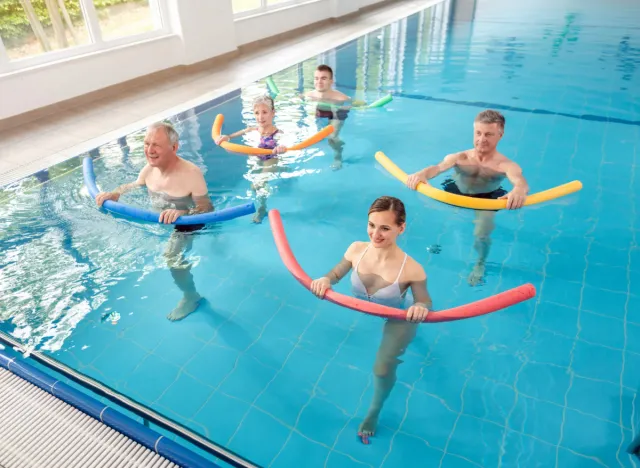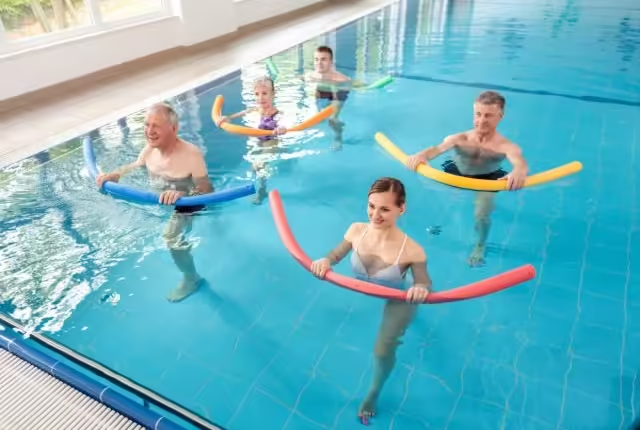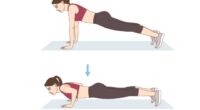Imagine a workout where you glide gently through water but still get a powerful workout in. That’s what water resistance walking is all about. It’s a low-impact exercise that offers high rewards, working out your entire body and helping you boost your stamina and endurance. This type of workout is perfect if you’re looking to change up your fitness routine and reap the benefits of exercising in water. It’s like having a secret weapon for getting stronger and improving your cardiovascular health while being embraced by the soothing water.
With my experience as a performance coach, I’ve seen many clients and athletes enhance their fitness levels with water resistance walking. The great thing about this exercise is that it’s easy to do and very effective. Water resistance walking is a great choice whether you’re recovering from an injury, dealing with joint pain, or just looking for a new way to challenge your body.
In this article, I will walk you through the world of water resistance walking, showing you how to do it safely and effectively, and how it can help you build strength and endurance. By the end, you’ll have all the information you need to add this fun exercise to your fitness routine.
Let’s dive in and discover how to make a splash in your workout!
What is water resistance walking?
Water resistance walking is a form of exercise performed in a pool or any body of water where you can stand and walk comfortably. The critical element here is the resistance provided by the water. Unlike walking on land, where gravity is your primary challenge, water resistance walking utilizes the natural resistance of water to give a full-body workout. The water’s buoyancy reduces the impact on your joints, making it a safe and effective exercise for people of all fitness levels and ages.
The resistance from the water adds a level of intensity to your movements that you wouldn’t typically experience on land. Each step requires more effort, engaging more muscle groups, especially in the legs, core, and upper body. Plus, the continuous resistance of the water means your muscles are working both on the way up and down, leading to a more comprehensive workout. It’s like walking in a slow-motion fight scene, with the water pushing back against every move you make.
You can perform water resistance walking in various ways, from casual strolls to high-intensity interval workouts. This exercise’s versatility allows you to adjust the intensity based on your fitness level and goals. Whether you want to improve your cardiovascular health, build muscle strength, or increase your stamina, water resistance walking can be tailored to meet your needs.
How to do water resistance walking:
To start water resistance walking, you don’t need much—just a pool and a willingness to get a bit wet!
Find a pool where the water level reaches between your waist and chest. This depth is ideal because it provides enough resistance to make the exercise effective while allowing you to move freely. If you’re new to this exercise, start with shallower water and gradually progress to deeper areas as you become more comfortable. Remember, the key is to start at a manageable level and gradually increase the challenge as your body adapts.
Start by warming up with basic stretches and light movements in the water. A solid warm-up helps your body adjust to the water temperature and reduces the risk of injury. Once you’re warmed up, begin walking across the pool at a steady pace. Focus on maintaining good posture, with your core engaged and your shoulders back. Swing your arms naturally, as you would when walking on land, to engage your upper body muscles. For an added challenge, you can walk against the current if your pool has a current system or create your own resistance by walking faster.
As you become more comfortable, you can increase the intensity of your water resistance walking workouts. Try incorporating high-knee steps, walking lunges, or side steps to target different muscle groups. You can also use water weights or resistance bands to add more difficulty. Interval training is another excellent way to up the ante: Alternate between fast walking or jogging periods and slower recovery walking. This form of training keeps your workout exciting and maximizes the cardiovascular benefits.
Here’s how water resistance walking can boost your strength and stamina:

Water resistance walking is incredibly effective for building strength and stamina, thanks to the water’s natural resistance. The constant push and pull of the water against your body means that your muscles work harder than they would on land. This resistance helps to build and tone muscles, particularly in the legs, core, and upper body. Over time, regular water-resistance walking can lead to significant improvements in muscle strength and endurance.
The buoyancy of the water reduces the impact on your joints, making it a safe and low-impact exercise. Buoyancy is particularly beneficial for individuals with arthritis, joint pain, or those recovering from injuries. The reduced impact allows you to work out longer and more frequently without the risk of overuse injuries. As a result, you can build endurance steadily and safely, making consistent progress toward your fitness goals.
Additionally, water resistance walking is excellent for cardiovascular health. The resistance of the water increases your heart rate, providing a cardiovascular workout that improves your heart and lung function. Regular water resistance walking can help lower blood pressure, improve circulation, and increase aerobic capacity. This means you’ll get stronger and improve your stamina, allowing you to perform everyday activities with more energy and less fatigue.
Frequently Asked Questions
What is water resistance walking?
Water resistance walking is a low-impact exercise where you walk through water, typically in a pool. The water provides resistance against your movements, making your muscles work harder compared to walking on land.
How can water resistance walking improve endurance?
Water resistance walking can improve endurance by engaging multiple muscle groups simultaneously due to the resistance provided by the water. This boosts the effectiveness of the workout and helps increase cardiovascular endurance over time.
What are the benefits of water resistance walking for endurance?
- Strengthens muscles without putting excessive strain on joints.
- Increases cardiovascular endurance and stamina.
- Improves flexibility and range of motion.
- Helps burn calories and aids in weight management.
Is water resistance walking suitable for all fitness levels?
Yes, water resistance walking is suitable for individuals of all fitness levels. The intensity can be adjusted by changing the speed of walking, the depth of water, and incorporating additional movements like leg lifts or arm exercises.






